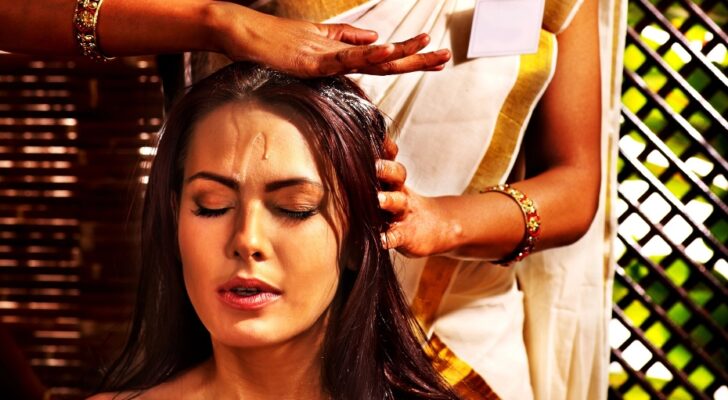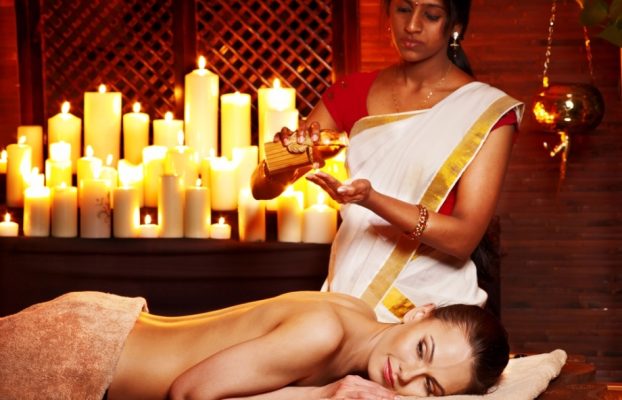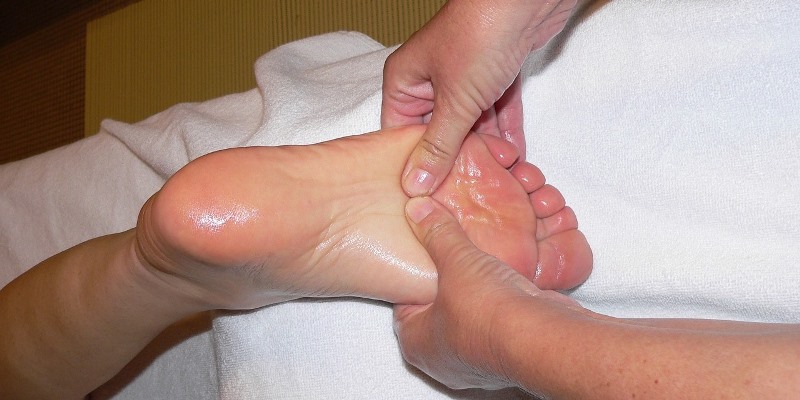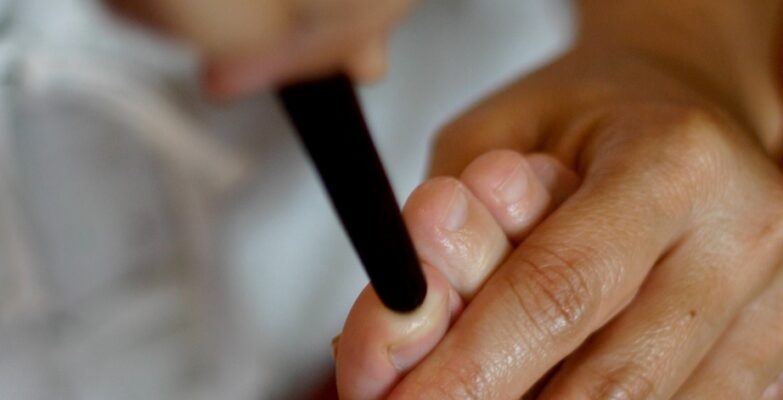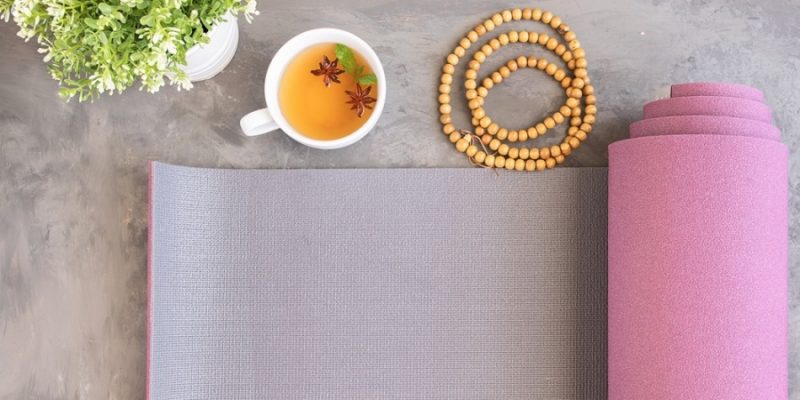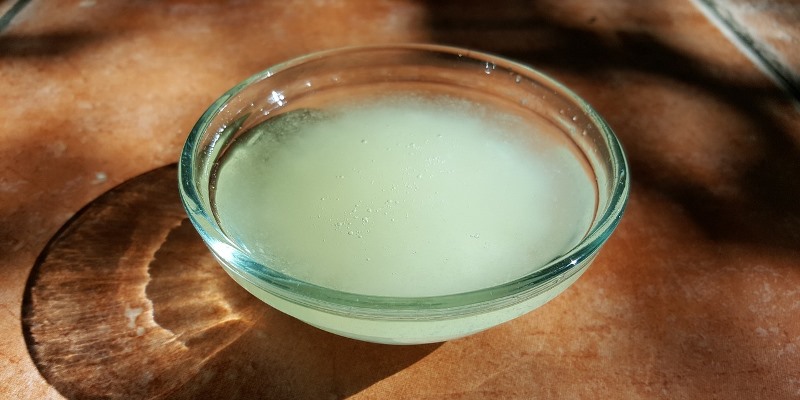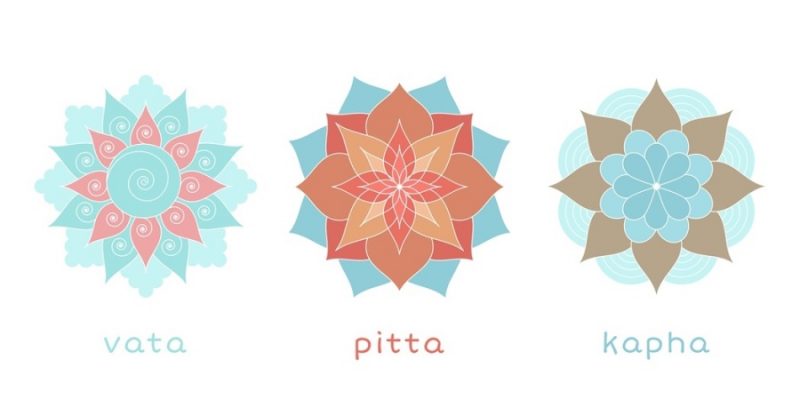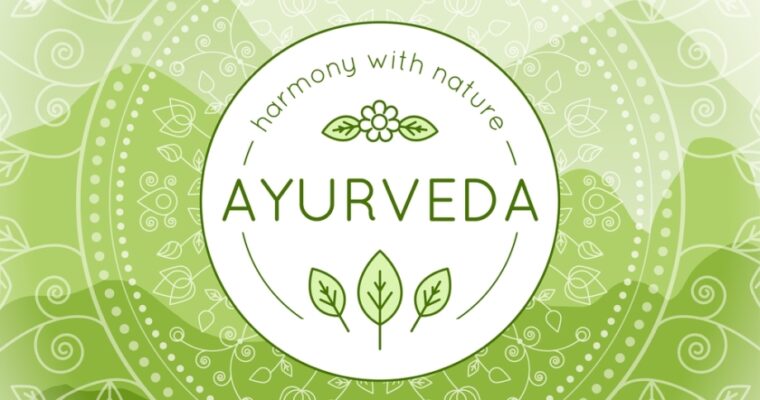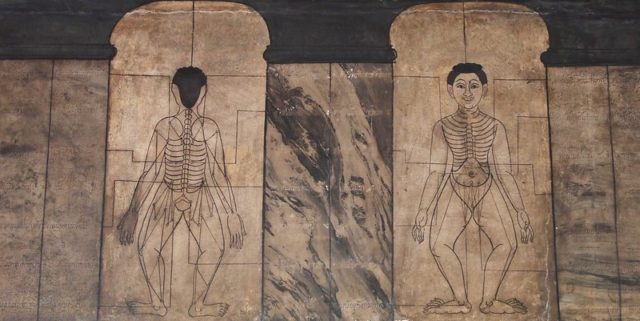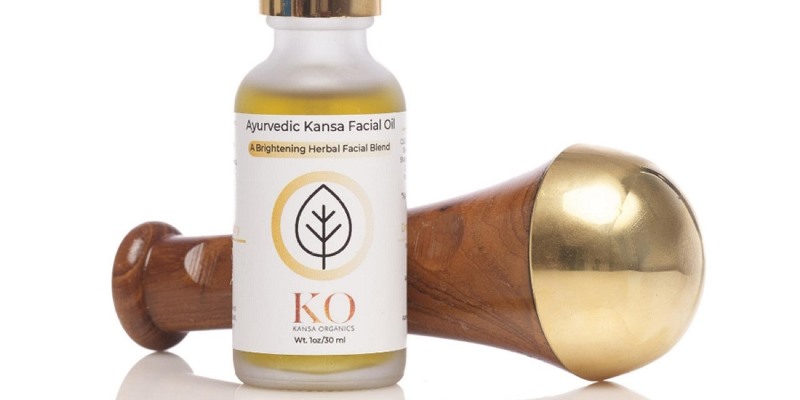
The Indian Ayurvedic Kansa Wand is a tool primarily used to massage the face, but it can also be used to massage the feet or other parts of the body. It’s typically applied as a self-care treatment modality.

The Kansa tool has a wooden handle and a round bronze top made from a mixture of copper and tin (often with additions of either aluminum, manganese, nickel or zinc). The top is called Kansa, also written as Kansya, Kanza, or Kasa. It’s thought that bronze (tin and copper) helps detoxifying the face.
To carry out the actual face massage, the tip (or top) of the Kansa Wand is used. Techniques applied are circling, drawing patterns, pressing, zig-zagging, and whatnot. Most areas of the face can be treated, including the forehead, chin, earlobes, mouth, cheeks, and jaws.
Serums and oils may be used also as an aid in the massage session, or for their nurturing qualities. Elixirs and serums can be chosen according to one’s Dosha-type, or according to the Doshas that need to be stimulated or appeased.
From out an Ayurvedic conceptual perspective, it’s also a treatment that stimulates the Marma points, which can be seen as energetic acupressure points that have a variety of health benefits when properly manipulated.
In any case, some benefits claimed of using the Kansa Wand are:
- relaxes the neck, head, and shoulders;
- promotes stress and anxiety relief;
- stimulates memory and concentration;
- jaw tension relief;
- balances the skin’s pH;
- aids in lymphatic drainage;
- stimulates the blood circulation;
- supports face smoothening, firming and toning;
- stimulates the self-healing ability of the skin;
- removes toxins.







